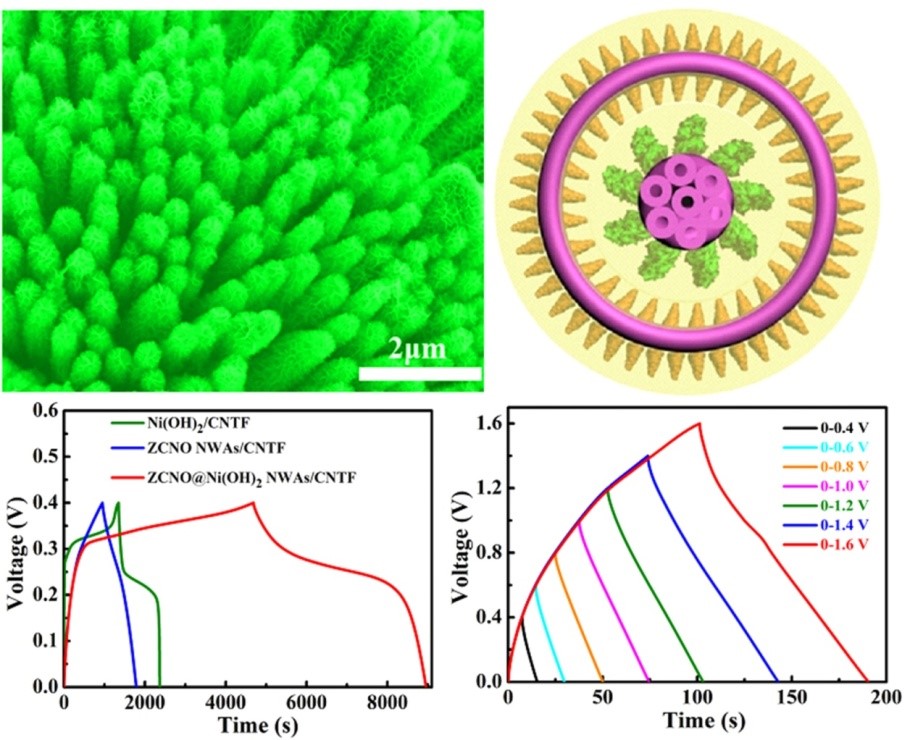Although high operating voltages have been achieved in asymmetric supercapacitors, remarkably capacitive electrode materials with simple and cost-effective synthesis methods are highly necessary to fabricate high-energy-density supercapacitors.
In a study published in Nano Letters, the research groups led by Prof.YAO Yagang at Suzhou Institute of Nano-tech and Nano-bionics of Chinese Academy of Sciences reported a simple and cost-effective method to directly grow three-dimensionally well-aligned Zinc-Nickel-Cobalt oxide (ZNCO)@Ni(OH)2 nanowire arrays (NWAs) on carbon nanotube fiber (CNTF) with ultrahigh specific capacitance of 2847.5 F/cm3 (10.678 F/cm2), which is approximate five times higher than that of ZNCO NWAs/CNTF electrode (2.10 F/cm2) and four times of Ni(OH)2/CNTF electrode (2.55 F/cm2) at a current density of 1 mA/cm2, this value is significantly higher than other reported fibrous electrode materials.
Benefiting from their outstanding electrochemical performance, a prototype coaxial fiber-shaped asymmetric supercapacitors (CFASCs) with a maximum operating voltage of 1.6 V was successfully fabricated, which were assembled by adopting ZCNO@Ni(OH)2 NWAs/CNTF as the core electrode and thin carbon layer coated vanadium nitride (VN@C) NWAs on carbon nanotube strip as the outer electrode. This CFASC device had a high specific capacitance of 94.7 F/cm3 (573.8 mF/cm2) and an exceptional energy density of 33.66 mWh/cm3 (204.02 μWh/cm2), which are the highest reported values for a FSC to date.
Importantly, this CFASC was also practically applied to power an integrated fiber-shaped ZnO-based photodetector. This integrated wearable device was highly sensitive to UV light.
The successful construction of ultrahigh-capacity ZCNO@Ni(OH)2 core-shell heterostructures opens the door to design new electrode materials for next-generation wearable supercapacitors.

(a)SEM image of ZCNO@Ni(OH)2 NWAs/CNTF (b) The cross-sectional structure of the CFASCs (c) Comparisons of the GCD curves of ZCNO@Ni(OH)2 NWAs/CNTF, ZCNO NWAs/CNTF and Ni(OH)2/CNTF electrodes (d) GCD curves of the CFASCs collected over different voltages (0.4 to 1.6 V) at a current density of 9 mA/cm2.(Image by SINANO)
Contact information:
Prof. YAO Yagang, Suzhou Institute of Nano-Tech and Nano-Bionics, Chinese Academy of Sciences
Email: ygyao2013@sinano.ac.cn
Reference: http://pubs.acs.org/doi/10.1021/acs.nanolett.7b03507
downloadFile
